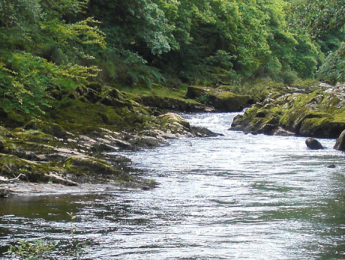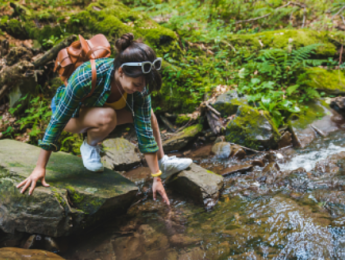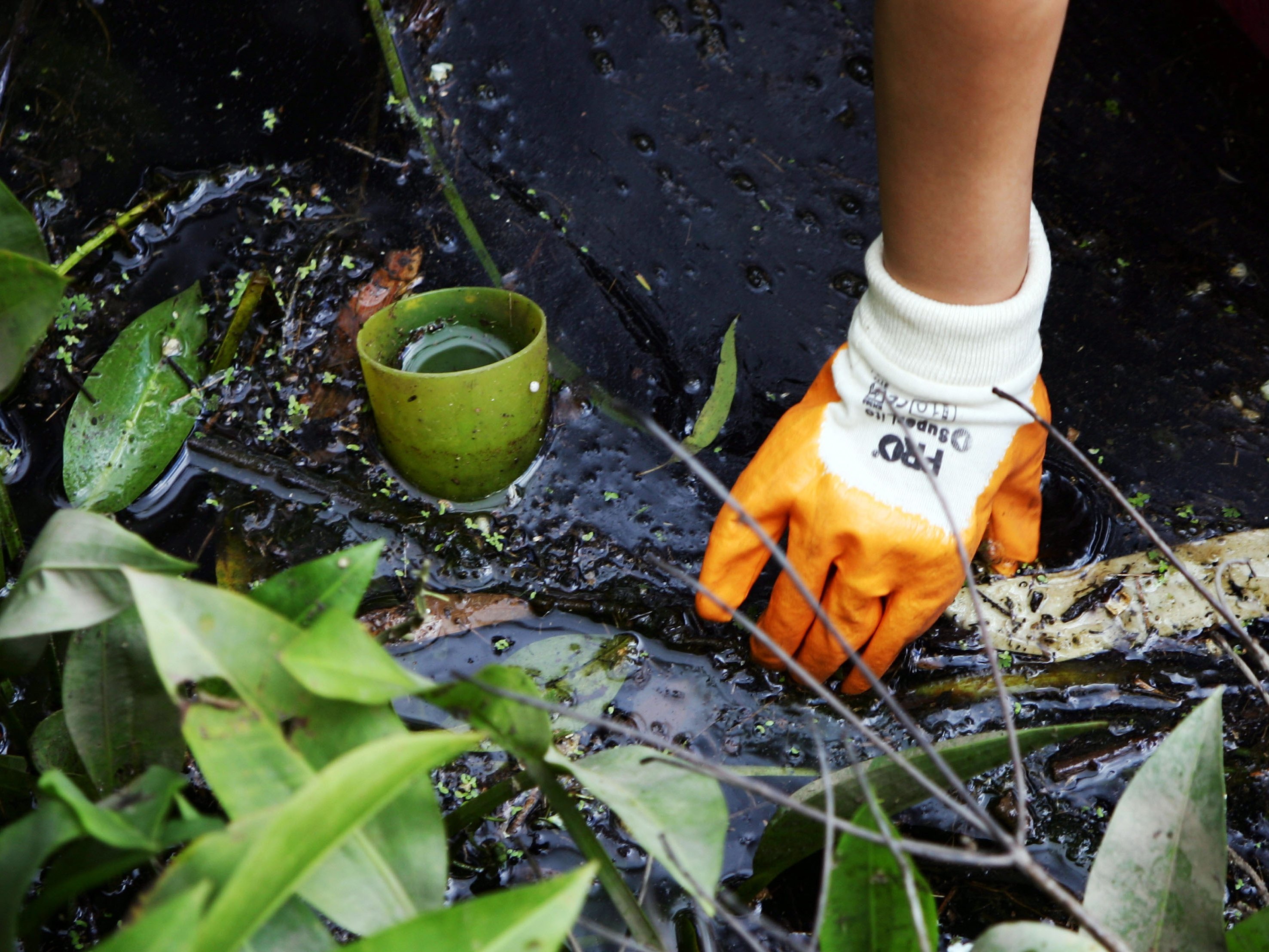
Improving our rivers’ health
We are passionate about the rivers in our operating areas. Making sure that they are in the best possible environmental health really matters to us.
We recognise that we have an important role to play in making sure our rivers are the pride of our region; from everything from the river water quality to accessibility for public enjoyment, being rich with biodiversity to ensuring sustainable abstraction through promotion of water efficiency.
An ambition for our rivers
To help us achieve our purpose, we have 16 ambitious goals. These are at the heart of everything we do. For the health of our rivers our IMPROVING THE ENVIRONMENT theme is key.
Our ambitious goals in this area are to:
- Be leading in the sustainable use of natural resources, through achieving zero avoidable waste by 2025 and being carbon neutral by 2027
- Demonstrate leadership in catchment management to enhance natural capital and deliver net gain for biodiversity
- Have the best rivers and beaches in the country
- Have zero pollutions as a result of our assets and operations
Delivering on our goals
To deliver on our goals for improving the environment and having the best rivers in the country we have worked across four areas where we can have the most impact:



Downloadable content
Working at a national level
Water UK: 21st Century Rivers
We have worked with fellow water companies to develop the 21st Century Rivers plan, with the key actions outlined below and which can be read in full here.
Create a clear, single, evidence-based, long-term plan for rivers between Government, regulators, water companies, agriculture, highways and other sectors. This will help guide and prioritise investment and policy change, demonstrate how we will achieve good ecological status nationally, and establish an approach for going further, faster.
The National Plan Steering Group should prioritise the design of a new legal basis that fixes the loopholes in legislation that create unintended consequences. This should be brought together in a new single ‘Rivers Act’ that focuses on outcomes, with the flexibility to ensure that innovation, particularly in nature-based solutions, can be delivered.
The National Plan Steering Group should help build on the success of the Catchment Based Approach by agreeing three areas of support. First, by setting more consistent expectations. Second, by ensuring more sustainable, long-term funding. And third, by integrating priorities at the local, catchment level into the plans that make the most difference on the ground – including local development plans, and the work of businesses, water companies and others.
The National Plan Steering Group should adopt a data-driven approach that looks at all sources of harm within rivers. This should challenge and support each sector to find opportunities to build and sustain river health, and maximise the benefits to people and nature.
We need a next-generation national monitoring system for rivers. Building on emerging plans by water companies and environmental groups to introduce new platforms, we need to work towards a single sustainable national platform that sees all rivers subject to timely, accurate, multi-source data on ecology, chemistry, public health and aesthetics.
Building on the early success of the ‘Water’s Worth Saving’ campaign, the water industry is ready to work with Government, manufacturers, retailers, local groups and others to transform the public’s understanding of water and the water environment, with a particular focus on education, information and support for changing behaviours on wet wipes, ‘unflushables’ and water efficiency.
Restoration of natural habitats and catchment resilience should be embedded across all legislation, frameworks and funding priorities to remove barriers to water companies, local authorities, NGOs, community groups, farmers and landowners working together to deliver solutions.
Government should introduce a target under the Environment Bill to reduce the amount of water abstracted for the purpose of public water supply, in order to incentivise action and investment in the most impactful changes. The water industry’s next investment period, 2025-30, needs to enable a significant acceleration of efforts to all three components of resilience: demand, leakage reduction, and developing new sources of supply, consistent with working towards a one-in-500-year drought resilience target.
Government should work with the water industry, NGOs and others to agree a plan in 2022 to progressively eliminate the four per cent of harm caused by storm overflows to English rivers, starting with the most sensitive catchments. The plan should propose new measures to reduce and divert surface water away from drains, including a national commitment by Government on measures to increase demand for — and reduce the cost of — natural, sustainable drainage schemes, deployable at large scale, that help capture and divert surface water and bring beauty and recreation to communities.
Government, open swimming and river recreation groups, representatives of agriculture and landowners, the water industry, and local authorities (responsible for safety and access) should jointly develop a new ‘Bathing Rivers’ framework for supporting the safe recreational use of inland waters, and deployment in every region of England. This will help communities gain even more from their rivers, with benefits for physical and mental health.
Environmental Audit Committee: Water Quality in Rivers Report
In October last year Heidi Mottram, our Chief Executive,
appeared before the Environmental Audit Select Committee as part of their inquiry into water quality in rivers. This was a topic of exceptional importance to us as a business with the environment at its heart.
The report positively highlighted the environmental performance of Northumbrian Water Group, alongside our national leadership on pollution reduction. The report also made clear the holistic nature of the challenges facing our rivers caused by different actors and the very real need for a longer-term approach to investment from the regulatory systems.
We already have in place approaches to address a number of the recommendations in the report relating to the water industry, with a major investment programme underway into storm overflows and plans to continually improve the data available on environmental metrics.
We especially welcome the proposals surrounding wet wipes and FOG (fats, oils and greases) which if implemented would make a major difference to blockages and its knock-on impact to discharges or pollution events. We are proud to see this being built upon Northumbrian Water’s successful Bin the Wipe campaign.
Case studies
We’re making a difference to river water quality in Northumberland as part in a multi-million pound project.
The LIFE Water and Disturbance Environmental Restoration (WADER) project aims to improve the ecological condition of more than 49,000 hectares of habitat and water quality for the species that depend on them.
Focused on the River Tweed catchment, Tweed Estuary and Northumberland Coast, the Natural England-led project sees our team working to help reduce nitrates entering the water from agriculture.
The Tweed catchment and estuary support internationally important over-wintering birds, such as the purple sandpiper and turnstone, as well as Arctic tern breeding colonies, and will help to control invasive species.
Other partners include the Environment Agency, Tweed Forum and Newcastle University.
Funding from partners and EU LIFE totalling £5.8 million will see the five-year project deliver COP26 conservation pledges. EU LIFE is the European Union’s funding instrument for the environment and climate action.
Our involvement is part of our Water Industry National Environment Programme (WINEP) work, complementing our own investment in reducing the impact on water quality from our own operations and assets.
Our award-winning upgrades to Wolsingham Sewage Treatment Works is just one of a number of projects where we have invested in improving and protecting the North East’s water courses and wider environments.
The £5.77 million project, in Weardale, County Durham, not only increases capacity to cater for significant population growth, but also helps protect the water quality in the River Wear by tackling asset deterioration.
We are investing millions in upgrades to other treatment works and network assets, protecting watercourses in areas including Dipton, Pittington, Sherburn, Kelloe, Stokesley and Esh Winning.
Further details of our investment schemes can be found on our community portal at www.nwlcommunityportal.co.uk
Our Branch Out fund if providing a boost for water voles that depend on the North East’s rivers and streams for species revival.
Naturally Native is a partnership project led by Durham Wildlife Trust together with Northumberland and Tees Valley Wildlife Trusts, operating across the entire Tyne, Wear and Tees River Catchments.
The aim is to halt the decline and aid the recovery of native water voles in the North East.
Branch Out funding of £12,200 will support the first phase of work being carried out on the River Don, a tributary of the Tyne, and at the Hetton Burn, Rainton Burn and Moors Burn in County Durham.
Using strategies that have proved successful in Scotland and East Anglia, the project will address predation from non-native American mink, as well as habitat loss and fragmentation.
Kelly Hollings, Project Manager at Durham Wildlife Trust, said: “Funding from Northumbrian Water’s Branch Out scheme is enabling this project to make a positive difference not only the region’s water vole population, which has been in decline for many years, but also a wide range of other native wildlife,”
“Water voles are our country’s ‘bankside engineers’, whose burrowing creates niche habitats that provide opportunities for invertebrates to breed, which, in turn, can benefit fish, amphibians, small mammals.
“We are already working with landowners to survey water vole populations and monitor that of their number-one predator – American mink. We have also delivered online training to 58 volunteers, who will help us to survey the water voles, and this is being followed up with practical training.
“It’s been a great start to the project and we are excited about its potential.”
Our Catchment Team have been working with partners to tackle a rise in water colour driven by historic land management to improve productivity in the 1950s to 1980s.
This involved drainage channels called ‘grips’ being dug in the uplands on blanket bog. This has led to changes in the hydrology of many blanket bogs and the peat that forms them.
Peat which has been developed over thousands of years forms these blanket bogs, and the water derived from many of these bog habitats feeds into our upland reservoirs, particularly in the Tees catchment.
Fully functioning blanket bog acts as a filter prior to water entering our uplands reservoirs. However, damaged blanket bogs do not provide this service as effectively and instead release organic matter, increasing the water colour which also makes water treatment more difficult, leading to increased treatment and energy costs at WTW.
Our work has involved ‘grip blocking’, which involves blocking the drainage channels with dams along affected areas.
These dams are built using either stone materials or coir rolls. The former are used in deep gulleys whilst the latter are used in shallower channels and flatter areas to slow the flow and allow sediment to drop out.
Over time blanket bog vegetation begins to develop on these restored sites. On the most heavily eroded areas this requires ‘bare peat restoration’, which involves protecting these areas with heather brash, which acts as a seed rich mulch of cotton grasses, heather seed and sphagnum mosses.
This protects the peat from the extreme Pennine climate and acts as a seed source which will vegetate over time.
We have also been planting sphagnum, which is the key species in restoring blanket bog to fully functioning blanket bogs. Sphagnum has the capacity to hold eight times its weight in water.
Additionally, re-profiling of ‘peat hags’ - large areas of bare peat - allows for vegetation to establish and also reduces the area of peat open to erosion.
Our Water Rangers scheme is unique in the water industry, using people whose passion for great quality rivers matches ours as extra eyes and ears on watercourses.
We have a team of 67 volunteers Water Rangers who monitor 56 routes more vulnerable to pollution threats across the region.
Last year, our volunteers carried out more than 2,000 individual patrols. They have reported about 750 issues, allowing us to respond quickly to any concerns or alert other agencies that need to respond.
Route walks not only involve volunteers reporting back on issues relating to our assets and their impact on water quality, but also on third party issues in and around the water, enabling us to inform relevant organisations of issues and deliver wider benefits for those who enjoy spending time near water.
Useful links
The Rivers Trust
Rivers shape our landscapes and provide the foundations of our cities, towns and countryside
Find out moreEvent Duration Monitoring (EDM)
The environment is at the heart of everything we do. We take water from the environment and return it back to nature in the best possible condition
Find out moreCatchments
Both Northumbrian Water and Essex & Suffolk Water have catchment plans in place to improve water quality in our water sources
Find out moreBranch Out funds
Help us deliver benefits for our natural environment, building resilience for the wildlife and people who are dependent on it
Find out moreBluespaces
At NWG, we take care to protect and improve the environment in everything we do, leading by example
Find out moreA vision for our coasts and rivers
The water environment is at the heart of everything we say and everything we do as a business
Find out more








